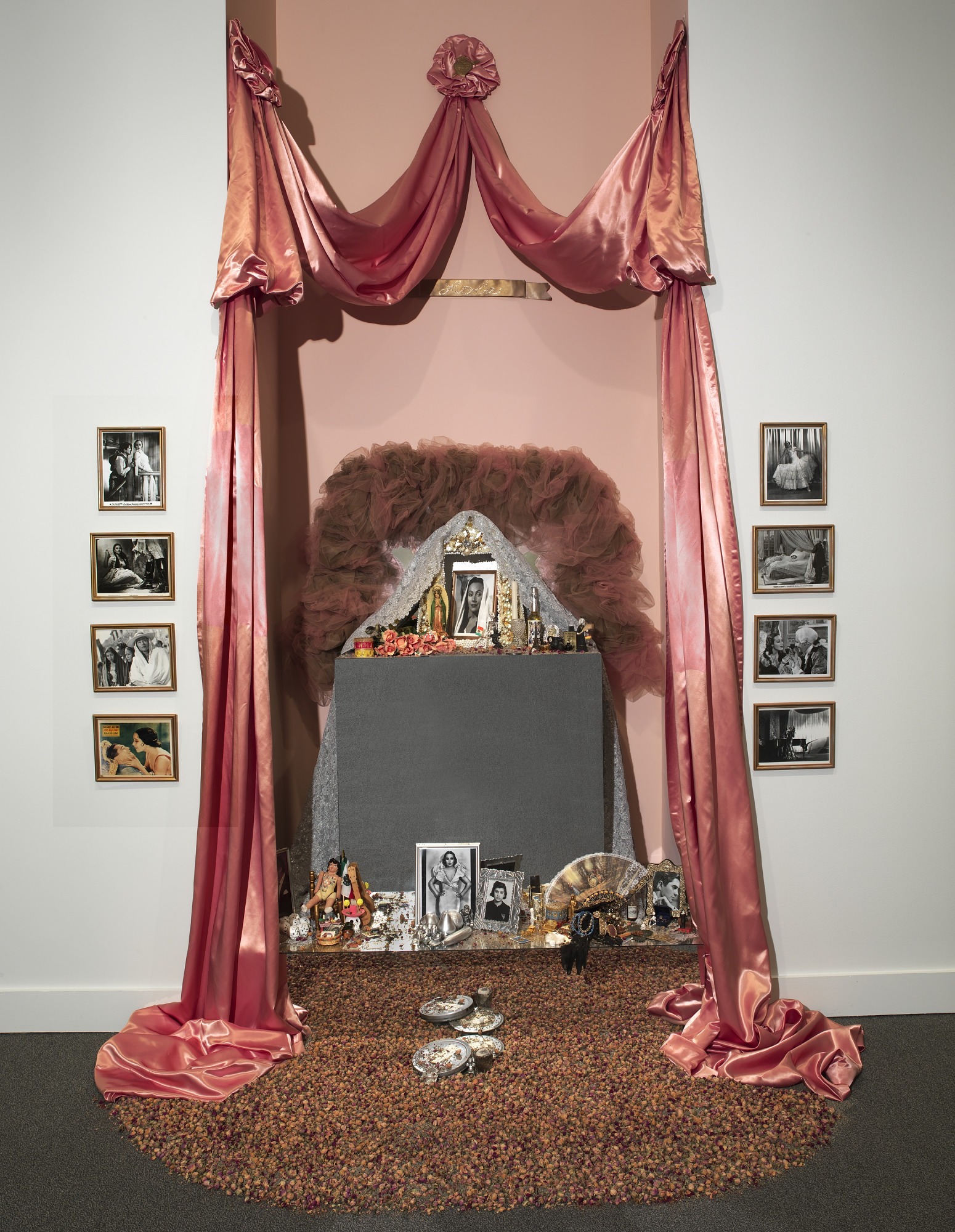
Rita Ackermann’s exhibition “Doubles” at Hauser & Wirth, Paris, starts as a sketch: Five near-identical nymphs lounge around; one smokes, another is daydreaming. A third clenches her fist, reaching toward a fourth who replies with a soft glance. They’re in the middle of something – or maybe they’re just bored. Only the last nymph seems to comprehend their sweet mystery, writing – or sketching – everything down, with one hand over her mouth. Is she the artist? [1] If the doppelgänger can be read in the Freudian sense of an authority that “can treat the rest of the ego as an object,” [2] how deep does Ackermann’s “double” go? Hung in the first room of the exhibition, and the genesis of all the other works on display, this scene depicted in Sketchbook Drawing 3 (1993) becomes the means for the artist to sound this depth. Blurring original and copy, artist and commodity, Ackermann returns not only to her past but also to the fundamental possibilities of painting: the expression of the “soul” in the age of the digitized double.
Ackermann’s double is, first of all, technical: The original drawing from the artist’s sketchbook has been blown up and reproduced on six large canvases that comprise the main series, Doubles. These works also feature reproductions of two graphite studies that are also included in the exhibition: Study after Double 1 (2024) and its second version (2025), both made after the first “copy” in the series, Double 1 (2024, note the singular in the title). [3] A series of works on paper, Shadows (nos. 3, 4, and 5, all 2025), then adds further disturbance to the repetition, deconstructing the printed images to the point where the nymphs appear only as evanescent colors or contours. artificiata.com
This movement toward abstraction is important, for Ackermann’s Doubles are far from being purely post-Warholian exercises; the artist’s “hand” is overwhelmingly present. Overlaying print onto print, in slightly different positions, Ackermann underscores the imperfection and instability of each reproduction, producing a blur: a fleeting, almost cinematic movement. She then doubles down on this effect through the way she plays with her own gesture, reworking the printed image with acrylic, oil, crayon, and cold wax in various ways: hand-painting lines that retrace and reimagine the contours of the nymphs, as in Doubles 8 (2025), or completely exaggerating them, as in Double 1. This visual confusion is, however, very composed, with Ackermann using both the borders of raw canvas and the edges of the silkscreen to structure the various layers into foregrounds and backgrounds, sometimes lending the works a vertiginous sense of depth, as in Doubles 1 (2025). This illusion is echoed by certain motifs that reemerge across the series: a dense mass of figures that haunt the background, a particular focus on the reaching hand of one nymph in the foreground, and diaphanous washes of white that play with opacity and transparency between layers.